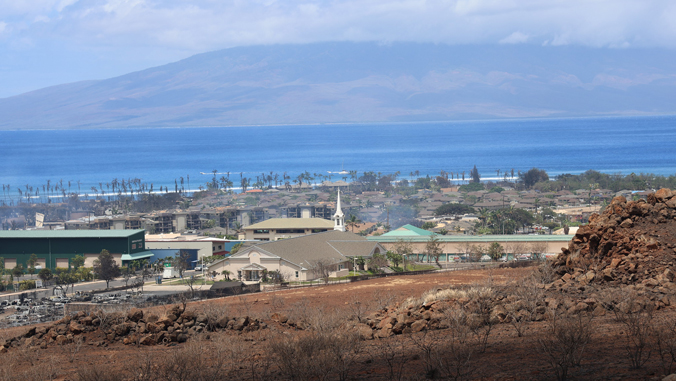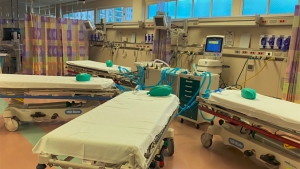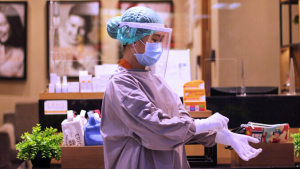
The Applied Research Laboratory at the University of Hawaiʻi (ARL at UH) is known for its research in renewable energy, coastal defense for sea-level rise, cybersecurity and more but it has also been active in supporting the community, especially in times of crisis.
Maui wildfires

ARL at UH worked with the Maui tech community to distribute Starlink terminals to Lahaina as part of the wildfire recovery effort. Approximately 500 Starlink terminals were distributed over two days, reestablishing communications for emergency personnel and those affected by the wildfires. The team also developed an app to organize information about missing community members and coordinated financial and supply donations for the Lahaina community, acting as “boots on the ground” to support recovery on Maui.
“Our work is community-driven. We help meet the needs of many of the emerging problems Hawaiʻi’s communities are facing,” said Margo Edwards, director of ARL at UH. “ARL at UH is at the forefront of technological innovation for disaster response, which will be crucial for Hawaiʻi as climate change continues to impact our state.”
COVID-19 pandemic

ARL at UH partnered with the Hawaiʻi Pandemic Applied Modeling Work Group to create a forecast tool that allowed epidemiologists to visualize the future state of the COVID-19 pandemic. The tool helped Hawaiʻi’s medical professionals prepare for hospital capacity and overflow.
“Several online tools exist that incorporate the SEIR [model for infectious disease dynamics] model, however, what we did was take those tools and customize it for Hawaiʻi to support Hawaiʻi—applying the lessons from around the world and also factoring in Hawaiʻi’s unique circumstances,” said Baseem Missaghi, an application developer at ARL at UH who helped work on the forecasting tool. “It also allowed us to develop a strong relationship with other groups in Hawaiʻi that had a shared passion for helping the community.”
With the UH Mānoa College of Engineering, ARL at UH assisted Hawaiʻi physicians to develop a technique for ventilating up to four patients using a single ventilator with a “multi-split ventilator system.” ARL at UH also partnered with the UH Mānoa School of Nursing to develop and deploy an app to count how masks were being worn in Hawaiʻi.
“ARL at UH has the ability to quickly build services, tools and apps,” said Missaghi. “Our work with the Department of Education on a check-in app and the UH Mānoa School of Nursing on the facemask tracking app allowed ARL at UH to help and serve the Hawaiʻi community.”
ARL at UH is the fifth U.S. Navy-sponsored University-Affiliated Research Center, bringing in a total of $139 million since it was established in 2008.

